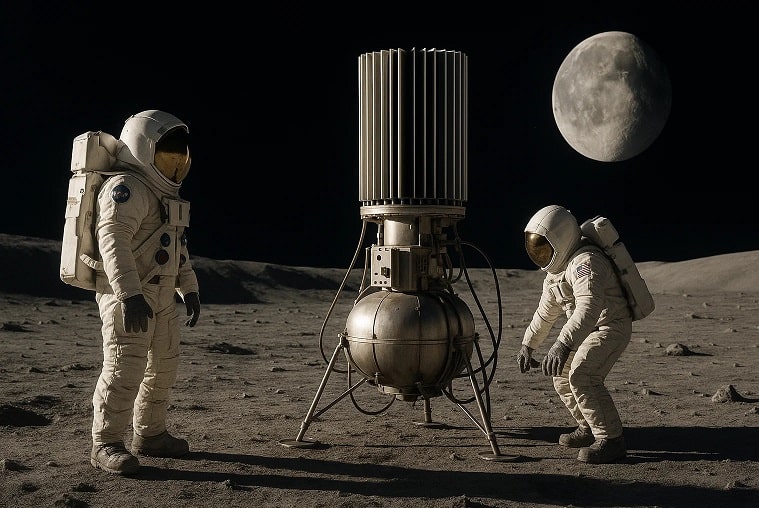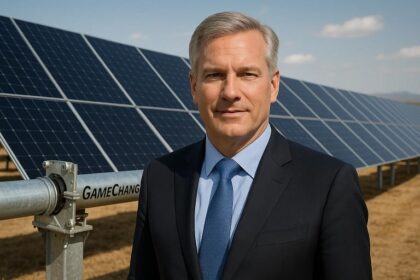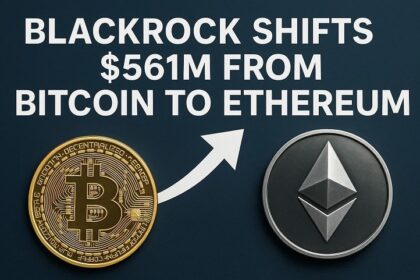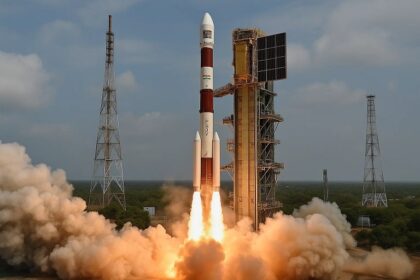Washington, DC, August 10, 2025 – The Trump administration has set an ambitious goal to deploy a nuclear reactor on the Moon by 2030, aiming to power lunar bases and secure U.S. leadership in the intensifying global space race. Acting NASA Administrator Sean Duffy, also serving as Transportation Secretary, issued a directive on July 31, 2025, calling for industry proposals to develop a 100-kilowatt fission surface power system. This move, designed to outpace rivals like China and Russia, underscores a renewed American push for a sustainable lunar presence while addressing the unique energy challenges of the Moon’s harsh environment.
Historical Context: From Cold War to New Space Race
The idea of nuclear power in space traces back to the Cold War, when the U.S. and Soviet Union used radioisotope thermoelectric generators to power spacecraft like Voyager. In 2015, NASA’s Kilopower project began developing small fission reactors, successfully testing a 1-kilowatt prototype in 2018 for lunar and Martian applications. The Artemis program, initiated during Trump’s first term in 2019, aimed to return humans to the Moon by 2024, a timeline later pushed to 2026 for orbital missions and 2028 for landings under the Biden administration.
The current directive responds to growing competition, particularly from China and Russia, who in 2021 announced plans for a nuclear-powered International Lunar Research Station by the mid-2030s. With China advancing through missions like Chang’e-6, which returned far-side lunar samples in 2024, and planning resource surveys with Chang’e-7 in 2026, the U.S. seeks to secure strategic lunar sites, such as water-rich South Pole craters, vital for fuel and life support.
Details of the Directive: A 100-Kilowatt Lunar Powerhouse
Duffy’s memo calls for a 100-kilowatt reactor—enough to power roughly 80 U.S. homes—to be ready for launch by early 2030. The system must operate autonomously for at least 10 years, delivering continuous power during the Moon’s 14-day nights when solar panels are ineffective. NASA plans to select up to two companies by early 2026 to build the reactor, building on 2022 studies by firms like Lockheed Martin and Westinghouse that designed 40-kilowatt systems.
The reactor, likely fueled by low-enriched uranium, would use Stirling engines to convert heat into electricity, weighing approximately 6,000 kilograms. It could be deployed via NASA’s Commercial Lunar Payload Services or Human Landing System, supporting habitats at the lunar South Pole. This power would enable critical operations like oxygen production through electrolysis, scientific experiments, and resource extraction for rocket fuel, laying groundwork for future Mars missions.
Technical and Safety Considerations
Nuclear fission offers high-energy density compared to solar arrays, ideal for the Moon’s shadowed regions. However, challenges include shielding against radiation, managing heat in a vacuum, and ensuring stability against lunar quakes. NASA’s design mandates placing the reactor away from habitats to minimize astronaut exposure, with fully autonomous operation to enhance safety.
The plan aligns with the 1967 Outer Space Treaty, which permits peaceful nuclear uses in space. The U.S. has safely launched over 30 nuclear-powered missions since 1961, with the 1964 SNAP-9A failure as a rare exception. While critics highlight proliferation risks and potential environmental impacts, supporters argue that the benefits—sustainable power for long-term exploration—justify the effort.
International Implications: Space Race 2.0
This initiative fuels a new space race, pitting the U.S.-led Artemis Accords, with 45 member nations including India, against the China-Russia-led lunar coalition. China’s progress, including plans for a 2035 lunar base, has heightened U.S. urgency. Duffy’s directive also accelerates plans for private space stations to replace the aging International Space Station by 2030, soliciting commercial proposals to maintain U.S. presence in low-Earth orbit.
Despite competition, collaboration persists. NASA shares lunar samples with global partners and works with India on the 2025 NISAR satellite launch. However, U.S. concerns over China’s military-civil space integration drive the push for strategic dominance, with the reactor potentially enabling Artemis allies to access shared power systems.
Challenges and Criticisms: A Tight Timeline
Skeptics question the 2030 deadline, citing NASA’s reduced $24.8 billion budget for 2025—a $2 billion cut—and past delays in nuclear propulsion projects like DRACO. Commentators have called the plan overly ambitious, arguing that funds might be better allocated to Earth-based priorities or proven solar technologies. Duffy, a former congressman and reality TV star with no space expertise, faces criticism for leading NASA during a leadership transition following Bill Nelson’s resignation. Supporters, however, see the aggressive timeline as a bold step aligning with Trump’s “America First” vision, recently echoed in calls to limit foreign tech hiring.
Future Plans: Lunar Economy and Mars Ambitions
A successful reactor could enable a permanent U.S.-led lunar outpost by 2030, supporting helium-3 mining for future fusion energy and serving as a staging point for Mars. NASA’s Artemis roadmap includes Artemis IV in 2028 for lunar Gateway assembly and Artemis V in 2029 for South Pole landings. Nuclear propulsion, tested via DRACO in 2027, could further accelerate Mars missions. Private players like SpaceX, with its Starship, and Blue Origin’s Blue Moon will play key roles, potentially delivering the reactor to the lunar surface.
Conclusion: A High-Stakes Lunar Leap
The Trump administration’s drive to place a nuclear reactor on the Moon by 2030 is a daring bid to secure America’s place in the new space race. Balancing innovation with geopolitical strategy, this plan could transform lunar exploration, enabling sustainable bases while intensifying global rivalries. As technical, budgetary, and diplomatic challenges loom, the success of this nuclear endeavor will test the U.S.’s ability to lead in an era where the Moon is no longer a distant dream but a contested frontier.













